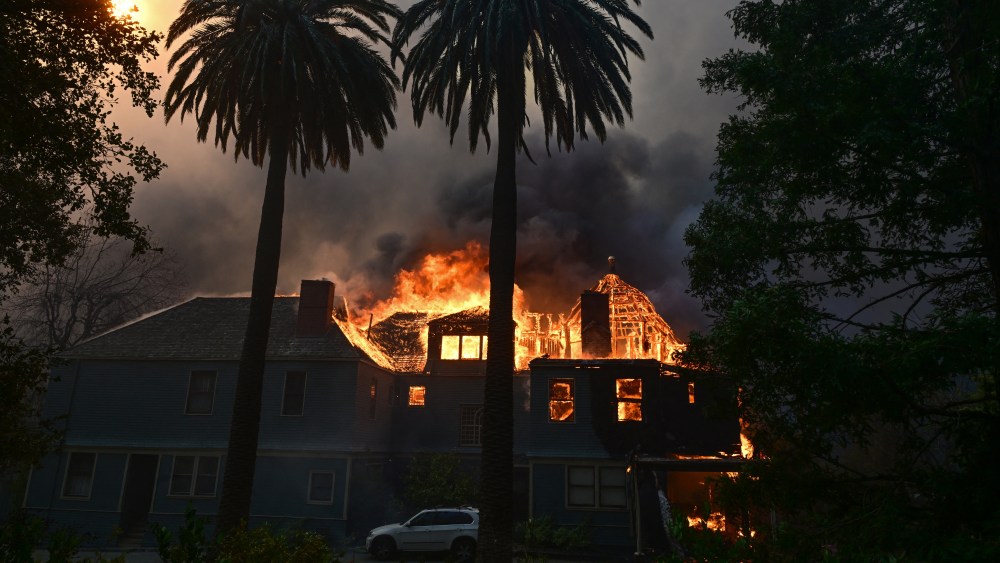What Will It Take to Lure Production Back to L.A. in Wake of Fires?
Survive till 2025, they said.
They didn’t say what would come next.
A week into the new year, wildfires devastated Pacific Palisades, Malibu and Altadena, causing an estimated $250 billion in damage. For the entertainment industry, they also disrupted production schedules, destroyed filming locations and left many workers without homes.
“This is absolutely a setback,” says Colleen Bell, the executive director of the California Film Commission. “I’m sure there are some people in the entertainment sector who feel like this might be the last straw.”
L.A. film workers were already struggling to recover from the pandemic, two strikes and a sharp decline in production volume.
“People are worried that the industry as we know it isn’t going to be around in five or 10 years, and that’s really sad,” says Amy Baer, executive producer of “The Apprentice.” “I hope it all doesn’t get derailed because of everything that we’re going through right now.”
But Bell’s not giving up on L.A. just yet.
“There’s a powerful spirit of community and collaboration that exists here,” she says. “This is absolutely a tough moment, but I’m confident we can rebuild stronger and more resilient than ever.”
So what will it take to bring production back to L.A. in the wake of the fires? Start with keeping permitting costs low, says L.A.-based location manager Danny Finn, a member of the Location Managers Guild International board.
“Temporarily pausing permit fees would be a huge, tremendous step in the right direction,” he says.
Gov. Gavin Newsom has already proposed expanding the state’s film incentive from $330 million to $700 million a year. The Motion Picture Association is pushing for additional changes that would make the program more generous and competitive with those of other states.
Film financing has become so reliant on public subsidies, both at home and abroad, that it’s hard to justify the higher cost of filming in L.A. without state support.
“There’s a way to do it — by studios and streamers and networks saying we’re going to do it,” Baer says. “It’s almost like a task force. You get Bob Iger and Ted Sarandos and Donna Langley and everybody together, and you say, ‘OK, Gov. Newsom, we want to see production ramp up in the next six months to help this economy get back on its feet and help these people recover.’”
L.A. Mayor Karen Bass established a film and TV task force in August 2024 to slow “production leakage to other markets.” Baer says committing to L.A. will require productions to tighten their belts. “I don’t think that that’s a bad price to pay in order to jump-start an economy that was suffering already before this calamity happened.”
Despite the high cost of shooting in L.A., the city does enjoy many advantages. Mike Schur, who shot “A Man on the Inside” in L.A. last year, notes that the city is the nexus of the creative community.
“The happiest sets I find are the sets where people are home,” Schur says. “They get to go home at night, and they get to see their families or their friends or do whatever they want to do near their houses. I think that the advantages you get of staying home far outweigh whatever minimal benefit you might get from shooting in some far-flung location.”
During the first week of the fires, permit applications dropped 80%, indicating an interruption in location shooting, though work on studio lots returned relatively quickly, says Philip Sokoloski, spokesman for FilmLA.
The Max show “Hacks” resumed filming its fourth season in L.A. after a brief pause. One of its key filming locations, a mansion in Altadena, was lost in the Eaton fire. Finn, who works on the show, says it will roll with the punches.
“We have no shortage of options of areas to film,” he says. “And I think that since the invention of moving pictures, this still is and will remain the greatest place on Earth to make a film or television show.”
Carolyn Giardina, Marc Malkin, Michael Schneider and Jazz Tangcay contributed to this story.


